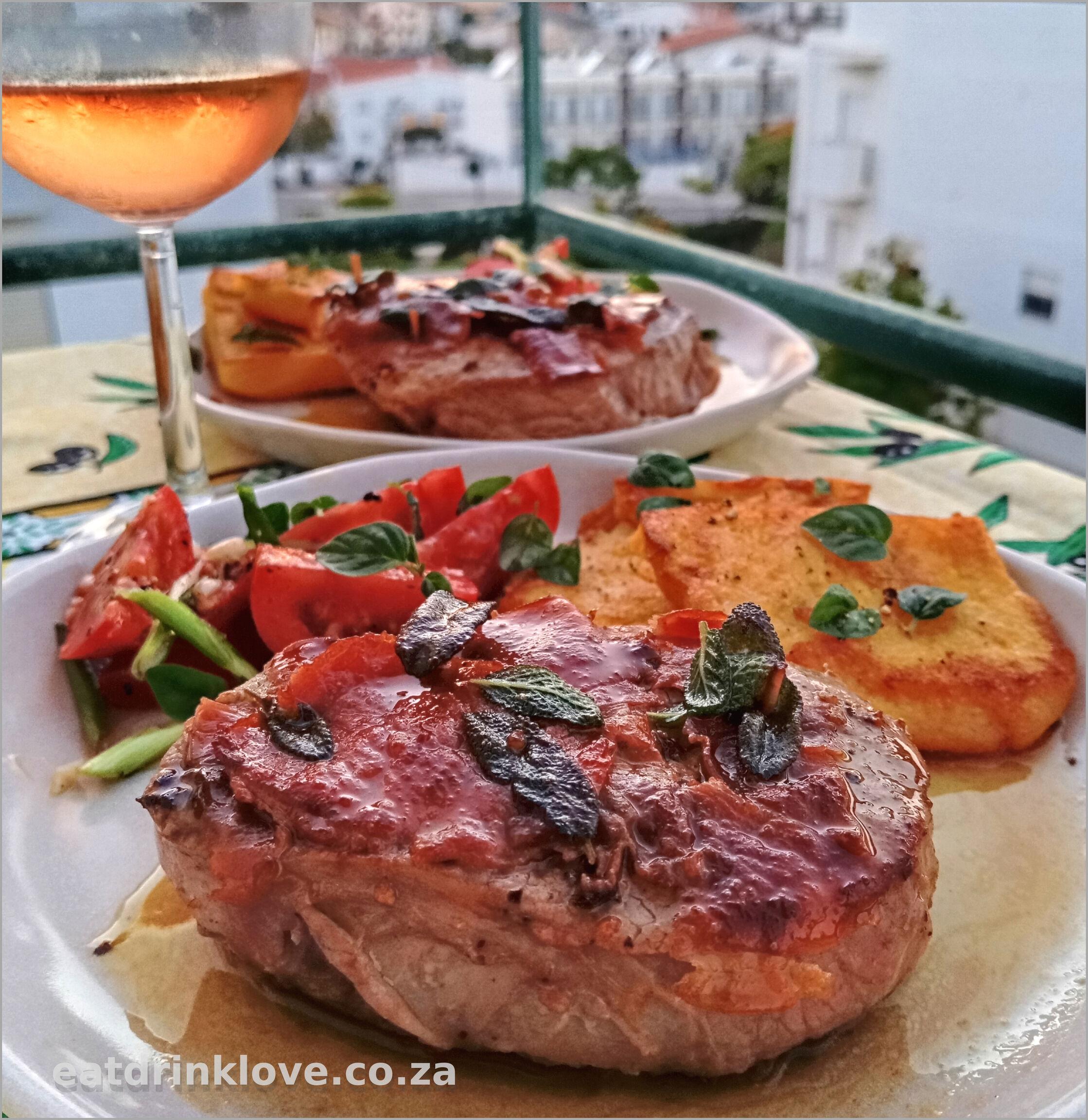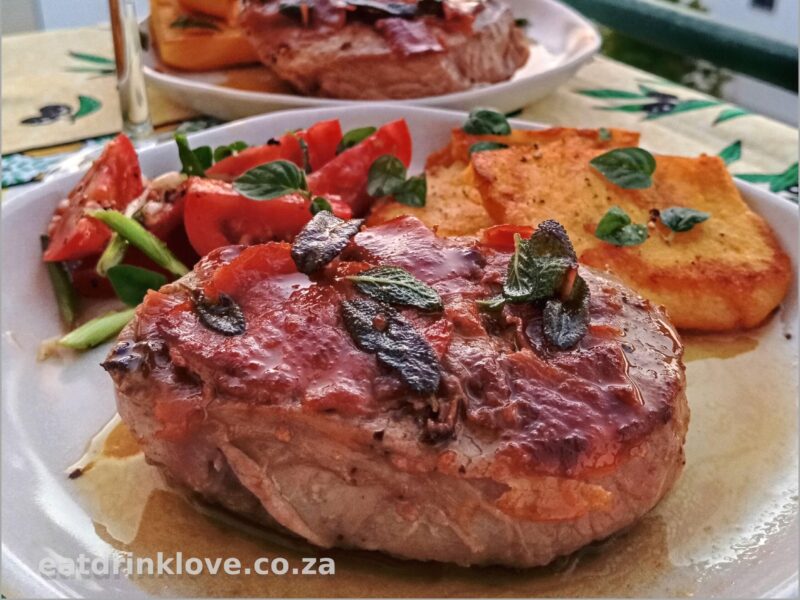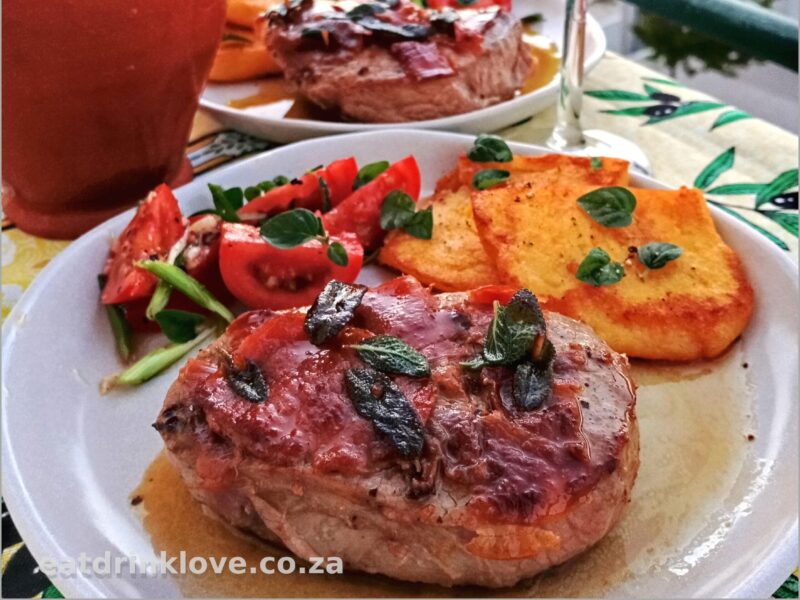Veal Saltimbocca is a classic Italian dish that embodies the simplicity and elegance of Italian cuisine. The name “Saltimbocca” literally means “jumps in the mouth”, a fitting description for this flavourful dish. It typically features tender veal cutlets topped with fresh sage leaves and prosciutto, then lightly sautéed until golden. The veal is often finished with a simple, yet rich, pan sauce made with white wine and butter, which enhances the savoury flavours. This version is slightly different.
In this recipe, I chose to use thick-cut veal steaks instead of the traditional thinly sliced cutlets. This allows the meat to develop a crispy exterior while remaining pink and tender on the inside. It’s important to use the best and most tender cut to avoid any chewiness. Of course, you can also opt for beef if you prefer.

The Saltimbocca recipe is heavily based on this recipe of Nagi of RecipeTinEats.
The Tomato salad recipe is based on another Nagi recipe which can be found here.
Ingredients
For the Saltimbocca:
- 2 x 200g veal steaks, 3cm thick
- 6 large sage leaves (my plant only had small leaves at the time)
- 2 large, thin prosciutto slices (or Parma or presunto)
- Flour, for dusting
- 4 Tbsp butter
- Freshly ground black pepper
For the Sauce:
- 2 Tbsp cold butter, cut into cubes
- 4 large sage leaves
- 60ml dry white wine
- Pinch of salt
For the Polenta:
- 250ml polenta
- 2 Tbsp butter
- 2 tsp salt
- Chopped fresh coriander, for garnish
For the Salad:

- 4 tomatoes, cored and cut into wedges
- 1 1/2 tsp red onion (or shallots), finely chopped
- 2 spring onions, cut into Thai strands
- 1/2 tsp garlic, finely chopped
- 1 Tbsp white wine vinegar
- 3 Tbsp olive oil
- 3/4 tsp kosher salt
- 2 tsp basil leaves, finely chopped
- Freshly ground black pepper
Method
For the Salad:
Place the tomato wedges in a large bowl.
Sprinkle over the red onion, garlic, vinegar, olive oil, salt, and a couple of grinds of black pepper.
Mix gently.
Sprinkle with basil leaves and toss once or twice.
For the Polenta:
Line a baking pan with parchment paper.
In a medium pot, bring 3 cups (750ml) of water to a boil.
Add salt, then stir in the polenta.
Continue stirring until the mixture thickens, then add another cup (250ml) of hot water.
Reduce the heat and simmer until the polenta thickens further.
Remove from heat and pour the polenta into the prepared baking pan, spreading it evenly.
Allow the polenta to cool completely, then remove it from the baking tray and cut it into suitable slices or pieces.
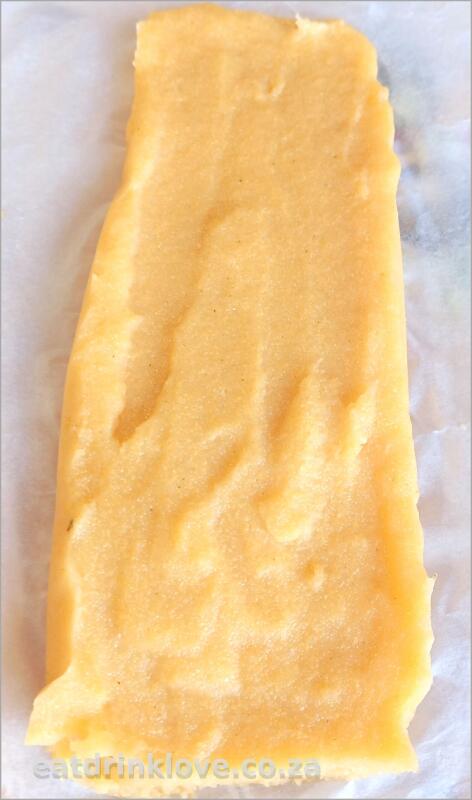
Heat a large pan with the butter and fry the polenta slices on both sides until golden brown.
Sprinkle the fried polenta with chopped coriander.
For the Saltimbocca:
Season both sides of the veal with black pepper.
On one side of each veal steak, place the prosciutto slices and sage leaves, securing them with halved toothpicks.
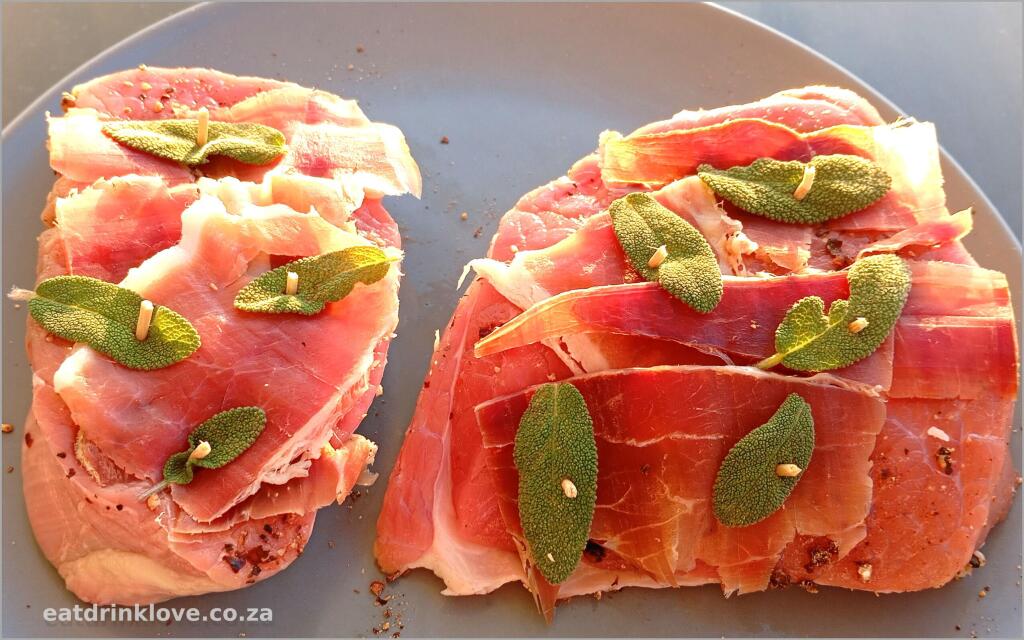
Dust the other (non-sage) side of the veal with flour.
In a large pan, heat the butter over medium heat until bubbling.
Fry the veal, sage and prosciutto side down, for about 3 minutes.
Turn the veal over, flour side down, and fry for another 3 minutes.
Remove the veal from the pan and set it aside, ensuring it remains slightly pink in the middle.
For the Sauce:
In the same pan used for the veal, add the cold butter, wine, sage leaves, and a pinch of salt.
Deglaze the pan by scraping up any browned bits from the bottom.
Reduce the sauce by about half.
To Serve: Serve the veal with the sage and prosciutto side up, alongside the fried polenta and tomato salad. Pour the sauce over the veal.

